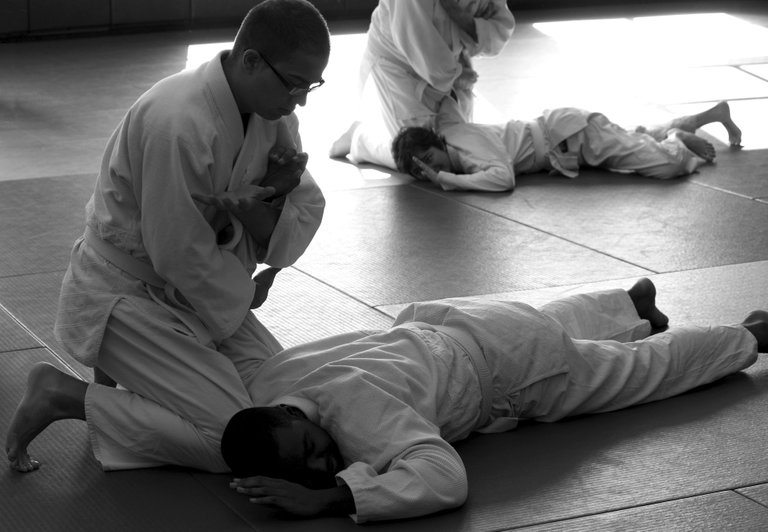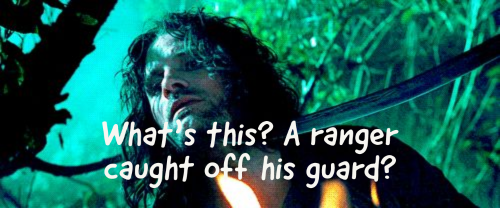Self-Defense For Normies

When word gets around that you practice martial arts you often get questions like this…
“Hey Phil, can you show me some moves? I want to know what to do when someone gets in my face…”
I had this happen the other day at work. My co-worker, who’s close to 60 years old, and is counting the days to retirement asked me this very question. I used to get frustrated because this question is ambiguous, and sometimes has another layer to it. I must decipher if it’s an innocent attempt at conversation, or if they want to make a joke about “KAARAATAAY” like bullies used to do at school.
Now days, I handle it more gracefully. I start by answering the question with a question.
“How much are you going to practice?”
If they say, “I don’t know,” or “not much,” I know it’s not a legitimate question and change the subject.
If they say they will practice, then I keep it basic and stick to general principles about safety and avoid discussing “moves.”
Yellowstone, the TV Show, masterfully highlighted the problem with moves when John Dutton confronted Dan Jenkins in his office. Unfortunately, this clip leaves out the best part of the scene, and the point I’m trying to make here.
After John Dutton leaves Jenkin’s office, his body guard says to Dutton,
“Nice move.”
Dutton replies, “It wasn't a move, I'm just meaner than you.”
Normies get swept up in the same myth that martial artists themselves do. That is the idea that you’re going to be saved by a “move.”
All martial arts are made up of a catalog of techniques. But it’s other aspects of your training that make them work. And if you’re not serious, then “moves” will lose to “mean” every time.
The following is the bare minimum of what people should know about self-defense.
Criminals have the advantage
It’s an unfortunate fact. But living a life of crime means that criminals are generally better suited for survival than someone dependent on the system.
Unless you’re an elf…

Situational Awareness
Situational awareness is a hot topic in the self-protection community. The concept got traction after 9/11, when the “See Something, Say Something” campaign started.
You can write books on situational awareness, and people do. However, things get unnecessarily complicated when you start talking about the OODA Loop and baseline divergences.
In my opinion, this is all you need to know.
Look at your surroundings!
Being oblivious tells criminals you’re ready to be pruned.
Keep your head on the level. They call it keeping your eyes in the boat in the Navy. Looking down at your feet on a ship spells disaster. Maintaining a level head posture improves your awareness and encourages eye contact. Eye contact is a crucial element of self-protection. It sends the signal to everyone that you’re not easily intimidated. A potential attacker will interpret this as a sign to move onto someone else.
Listen to your intuition. If something doesn’t feel right, it isn’t. This is easier said than done. Societal conditioning has taught normies to ignore all kinds of survival signals to “fit in.”
Avoid large crowds.
Sit facing the entrance in restaurants.
Don’t get drunk, high, or stupid in public. Or, as my friend says, “Don’t do stupid things in stupid places with stupid people.”
Body Language
Body language is the way in which we carry ourselves – our level of confidence and our demeanor. It’s also how our body responds when interacting with others.
Criminals are experts at reading body language. It tells them how much trouble you’re going to be.
Posture is an easy fix…chin up, spine straight, shoulders back. But it requires a conscious effort if you’ve been a shoe gazer your whole life
Keep your head on the level and give people a split-second glance. Looking longer than that can invite problems. But a split-second glance tells people that you know they are there. It signals to a potential attacker that they’ve lost the element of surprise.
Stride length
Stride length goes along with body language.
Studies have shown that criminals use stride length to gauge someone’s vulnerability.
The optimal stride is graceful with a natural arm swing. It should convey assertiveness and confidence.
A stride that is abnormally long can make you look uncoordinated. This signals weakness and a lack of focus.
A stride that’s too short, or shuffling, signals uncertainty and a lack of confidence.
Fighting is about controlling the distance
If you find yourself in a confrontation you must create space. Space is literally a matter of life and death. Criminals will use all kinds of tricks to get into your space, and if you allow them to do so your chances of survival drop significantly.
This is particularly troublesome for trusting people.
If you’re approached by a threatening individual use a sharp “push” to the throat with your fingers to ward them off. Yell something like “Hey, back up!” If you get good at this, you can target the bundle of nerves behind the clavicle. It hurts like hell and looks rather innocent.
If you can’t create space, you only have one option and that’s to hit first. I recommend doing it like this. Put your hands up to protect your head. Deliver low line attacks to the shin, knee, and groin. Use your instep and the outside of your shoe to strike or rake the shins and knees. If your back is against the wall thrust your heel into the pelvic bone. Your goal should be to break it.
Low kicks are preferable because the legs are naturally stronger than the upper body.
Whatever you do, don’t go the ground on purpose.
If you end up grappling your only goal should be to get out of grappling range. Use strikes to create space. Only grapple to tie up the attacker so they stop hitting you.
The big three targets for self-defense are the eyes, throat and groin. I include the lower leg because it can be difficult for older people to kick and knee the groin.
Training situational awareness is arguably the most important part of self defense training. You hit the nail on the the head with your examples. "Moves" are probably the least important part of the whole equation.
I like Rory Miller's book, "Meditations on Violence." If someone is training martial arts for self defense, and they haven't read that book, they're putting the cart before the horse, IMO.
I'm glad you brought up Meditations on Violence. I actually haven't read it! LOL but it's been on my reading list for a while. The Little Black Book of Violence is an excellent one too. I have read it and it presents the reality of violence in a sobering manner.
Congratulations @senseiphil! You have completed the following achievement on the Hive blockchain and have been rewarded with new badge(s) :
Your next target is to reach 13000 upvotes.
You can view your badges on your board and compare yourself to others in the Ranking
If you no longer want to receive notifications, reply to this comment with the word
STOPCheck out the last post from @hivebuzz:
a colleague of mine practices martial arts, he is a master of Wing Chun, I would like one day to have time and take lessons from him
Congratulations @senseiphil!
You raised your level and are now a Dolphin!
Check out the last post from @hivebuzz: